Extremadura Foodie Guide
(Local cuisine, recipes, wines & more)
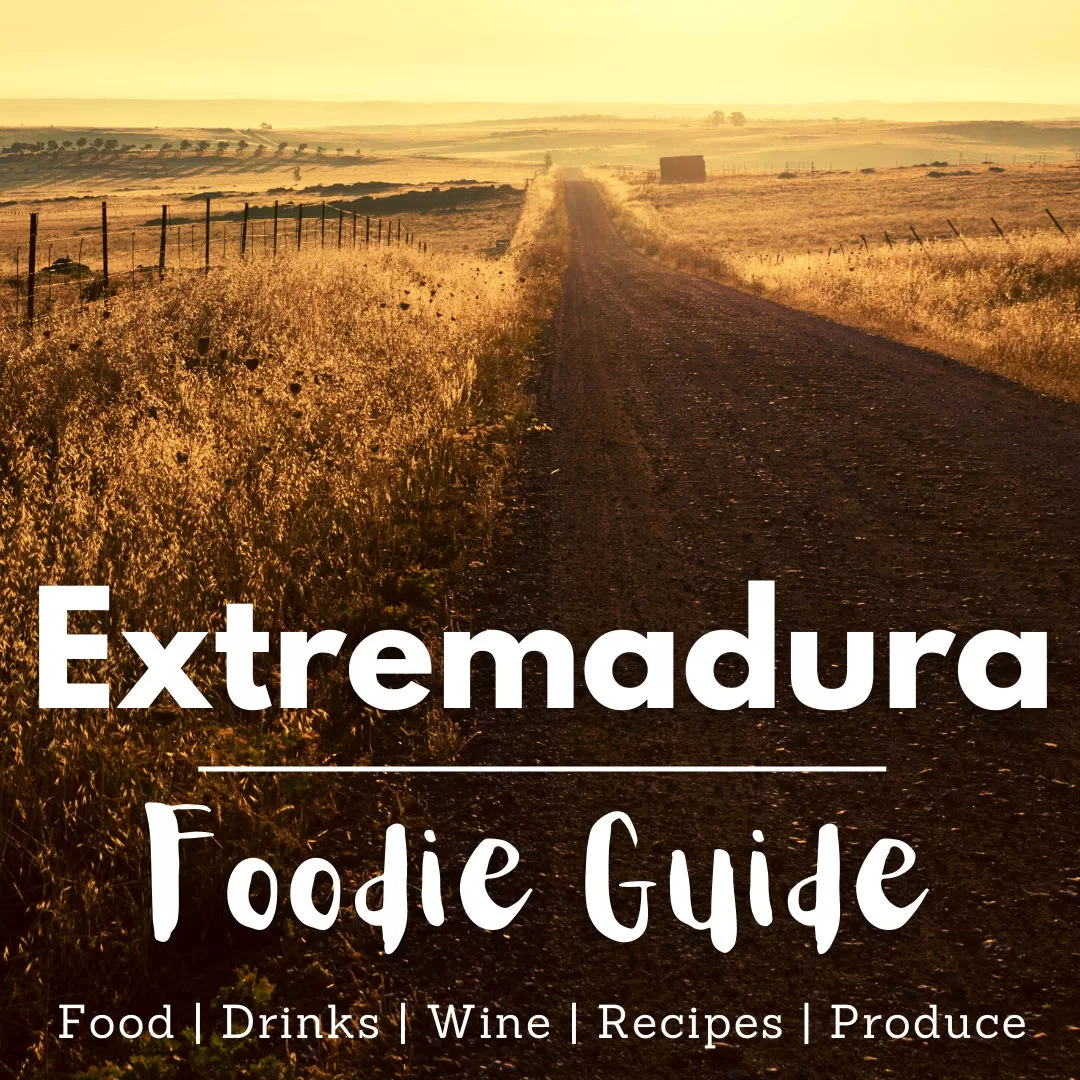
Extremadura foodie guide explores the cuisine characterized by local ingredients, warming hearty stews, world-famous recipes, Jamón Ibérico, and delicious desserts.
An introduction to the region of Extremadura
Extremadura has a rich culinary tradition that reflects its rural heritage and Mediterranean climate. The region’s cuisine is characterized by its simplicity and use of local ingredients, such as olive oil, garlic, and paprika.
The region of Extremadura is an autonomous community located in the southwestern part of Spain, bordering Portugal to the west, Andalusia to the south, and Castilla y León and Castilla-La Mancha to the north and east.
Extremadura is known for its rugged landscape, rich history, scorching summer temperatures, and traditional way of life.
In this article, we will explore the region’s climate, inhabitants, industries, food and drinks, and other interesting features that make Extremadura a unique destination for travelers and food lovers!
Before you visit, be sure to check out the information available on the Extremadura Tourism website.
Climate
Extremadura has a Mediterranean climate with continental influences. Summers are hot and dry, with temperatures reaching up to 40°C in some areas. Winters are most often mild, but occasional frost and snowfall can occur in the mountainous regions.
Rainfall is scarce, especially in the summer months, with an average of around 500mm per year. This arid climate has shaped the region’s vegetation and wildlife, making it an ideal habitat for drought-resistant species such as cork oak, holm oak, and juniper.
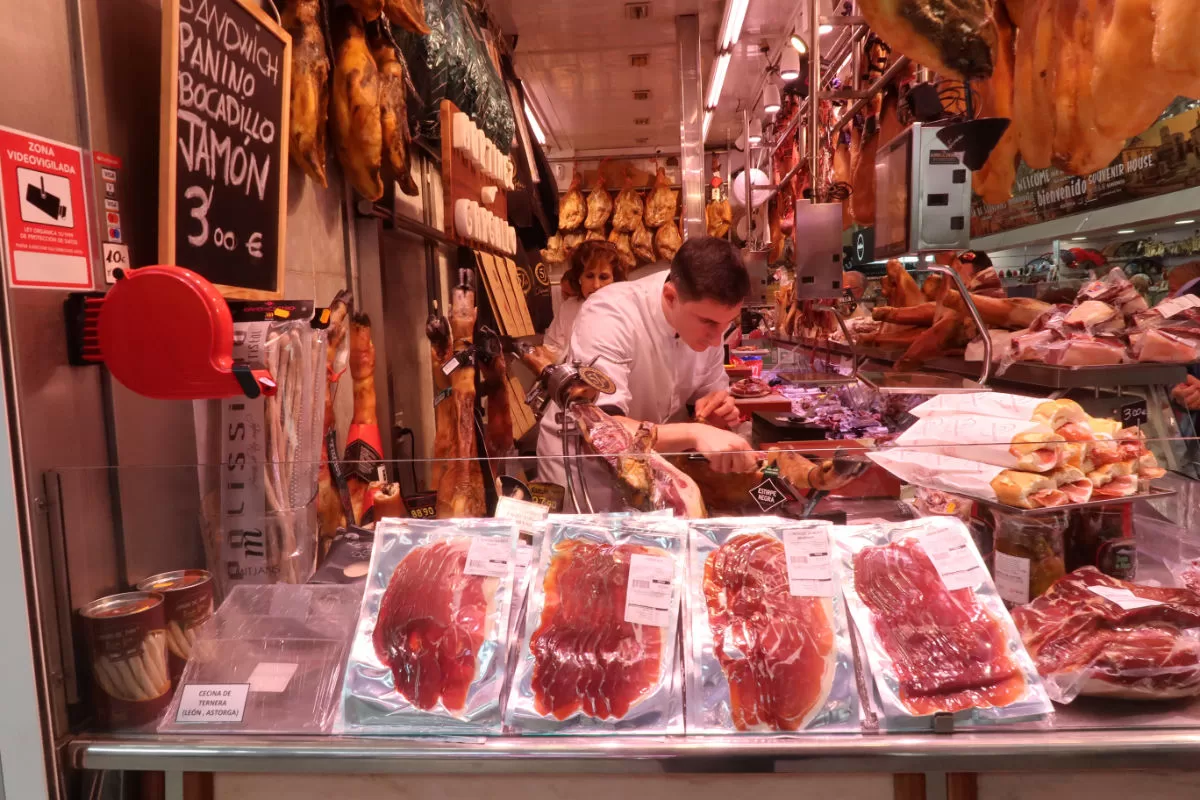
Inhabitants
Extremadura has a population of around 1.07 million people, making it one of the least populated regions in Spain. The majority of the population lives in the cities of Badajoz and Cáceres, while the rural areas are sparsely populated.
The people of Extremadura are proud of their heritage and culture, which is evident in their traditions, festivals, and gastronomy.
Industries & Exports
Extremadura’s economy is largely based on agriculture, with crops such as olives, grapes, figs, and cork being the main products. The region is also known for its livestock, especially the famous Iberian pigs, which are bred for their delicious ham.
In recent years, tourism has become an increasingly important industry, with visitors attracted to the region’s natural beauty, historical sites, and culinary offerings.
Food and Drinks
Extremadura has a rich culinary tradition that reflects its rural heritage and Mediterranean climate. The region’s cuisine is characterized by its simplicity and use of local ingredients, such as olive oil, garlic, and paprika.
Some of the most popular dishes in Extremadura include Migas, a hearty bread-based dish with pork or chorizo, and Caldereta, a stew made with lamb or goat.
One of the most famous products of Extremadura is its ham, known as Jamón Ibérico. This ham is made from the meat of the Iberian pig, which can roam freely and feed on acorns in the Dehesa, or oak forests. The ham is cured for up to 36 months, resulting in a rich, nutty flavor that is highly sought after by food connoisseurs.
Another local delicacy is Torta del Casar, a creamy cheese made from sheep’s milk. This cheese has a distinctive flavor and texture, and is often served with bread or crackers.
Extremadura Cuisine and Famous Dishes
Extremadura is known for its simple yet flavorful cuisine, which reflects the region’s rural heritage and Mediterranean climate.
Here are just a few of the most famous recipes from Extremadura:
- Migas: This hearty dish is made from breadcrumbs, garlic, paprika, and olive oil, and is often served with pork or chorizo. The breadcrumbs are fried in olive oil until they are crispy, then mixed with garlic and paprika to add flavor.
- Caldereta: This stew is made with lamb or goat meat, potatoes, tomatoes, onions, and garlic. The ingredients are cooked together with a blend of herbs and spices until the meat is tender and the flavors have melded together.
- Revuelto de Espárragos Trigueros: This dish is a popular breakfast or brunch option in Extremadura. It consists of scrambled eggs with wild asparagus, garlic, and olive oil.
- Gazpacho Extremeño: This refreshing soup is made with tomatoes, peppers, garlic, bread, and olive oil. It is typically served cold and is perfect for hot summer days.
- Cordero a la Estaca: This traditional dish is made by roasting a whole lamb on a spit over an open fire. The lamb is seasoned with salt and garlic and slowly roasted until the meat is tender and the skin is crispy.
- Pestiños: These sweet pastries are a popular dessert in Extremadura, especially during the Christmas season. They are made from flour, sugar, honey, and aniseed and are deep-fried until they are crispy and golden brown.
- Ensalada de Tomate con Ajo: This simple salad is made with fresh tomatoes, garlic, olive oil, and salt. It is a popular side dish and is often served with grilled meats or fish.
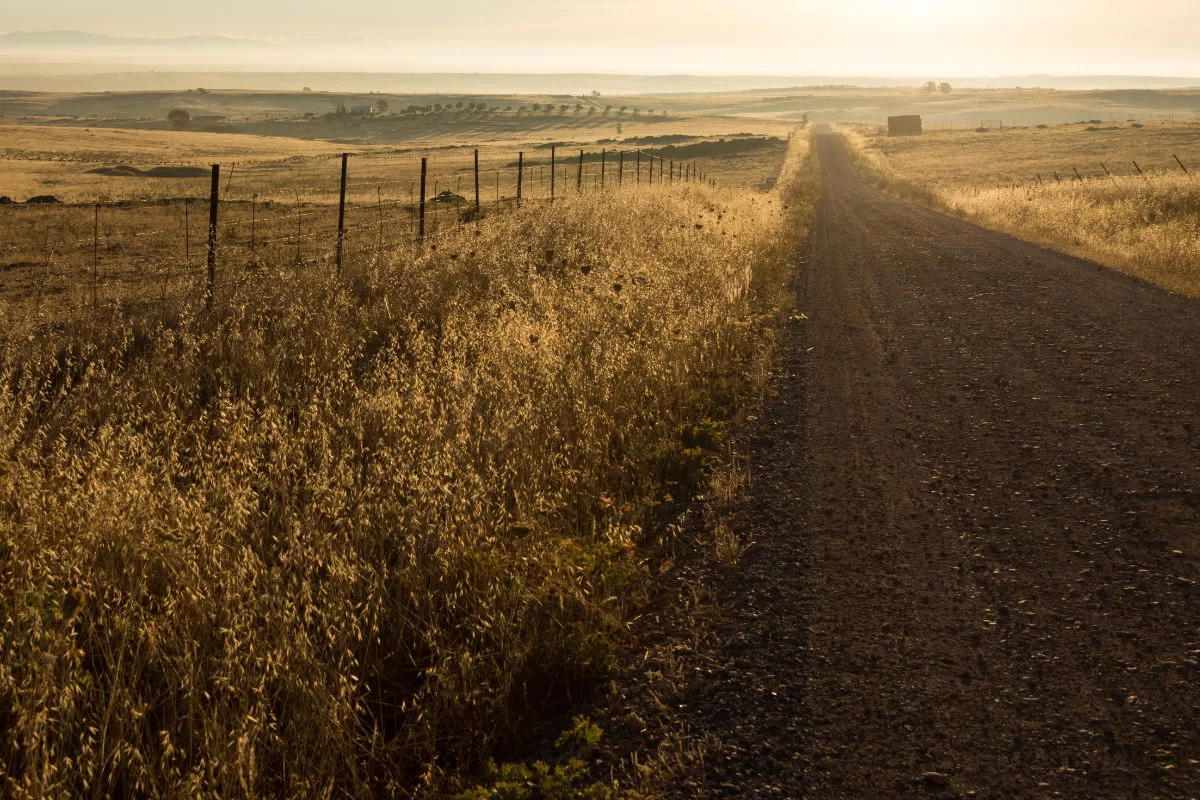
Extremadura Drinks
In terms of drinks, Extremadura is known for its wines, which are produced in the regions of Ribera del Guadiana and Tierra de Barros. The most famous grape varieties are Tempranillo, Cabernet Sauvignon, and Merlot, which produce robust red wines with fruity aromas.
The region is also known for its liqueurs, such as Licor de Bellota, a liqueur made from acorns that has a sweet, nutty flavor. It is often served as a digestif and pairs well with cheese or chocolate.
Another popular drink is Pitarra, a fermented drink made from grape must.
Learn the secrets of the Mediterranean Diet –
It’s no secret that the Mediterranean diet is healthy. It has been proven in numerous studies from all corners of the world, it aids weight loss, reduces the risk of heart disease and type 2 diabetes, as well as a growing list of other health benefits.
Find out what’s most exciting about the diet and create some incredibly tasty and simple Spanish recipes.
Looking for more travel inspiration?
Check out our other Regional foodie guides from all over Spain!
The Basque Country
Straddling part of the border between France and Spain, the Basque Country (País Vasco) has an incredibly diverse landscape that extends far beyond the renowned foodie capitals of larger cities such as San Sebastian and Bilbao. While the region is small, it has the highest concentration of Michelin-starred restaurants in the world per capita.
Galicia
Exploring the far northern Galicia region by food is like opening a foodie treasure trove. With a rugged coastline that divides two seas, undulating hills, and large fertile plains that benefit from the highest annual rainfall in Spain. Galicia is blessed with exceptional quality fresh produce, seafood, meat, and dairy products at every turn.
Galician cuisine is perhaps most famous for the stunning dessert, the Tarta de Santiago, but visitors to the region should take time to explore the many delicacies and dishes that are made in the region.
Madrid
They say that all roads lead to Madrid and a small stone slab lies discretely within Madrid’s Sol Plaza celebrating the geographic kilometer ZERO of Spain. But, it’s just a short stroll in any direction where you’ll find the rich aromas of authentic Spanish food wafting from the alleyways and narrow cobbled streets that are lined with Madrid’s famous tapas bars and prestigious restaurants.
Madrid is not only the geographic center of Spain but also the renowned melting pot where Spain’s culinary cultures merge. This is no more evident than in the enormous range of Spanish and international cuisine on offer throughout the capital, and with nearly 10,000 restaurants within the Madrid region, you’re spoilt for choice!
The Valencia Region
With its white-sand beaches and turquoise water of the Mediterranean Sea, the Valencia region harbors some of the best cuisine and fresh produce in Spain. Orange groves are dotted all the way up and down the region, and the rich fertile soil makes for ideal vineyards, producing excellent wines. It’s also one of only two UNESCO-listed locations for gastronomy and is home to many of Spain’s most renowned restaurants.
Catalonia / Cataluña
The Catalonia region is perhaps best known for its thriving capital, Barcelona, but a close second when you mention Catalonia is the food. The region offers a wealth of authentic Spanish cuisine that has resonated all around the world.
With its borders spanning from the Mediterranean Sea in the east, to the stunning rugged grazing plains of Aragón, to the picturesque mountainous zones of the Pyrenees mountain ranges, the Catalonia region has it all!
The Spanish Radish Blog
Summer Salad with Melon, Mozzarella, and Serrano Ham – Ensalada de Verano con Melón & Jamón
Summer Salad with Melon, Mozzarella, and Serrano Ham Ensalada de Verano con Melón & Jamón Nothing captures the essence of summer quite like a vibrant, refreshing salad—and this Summer Salad with Melon and Serrano Ham...
Spanish Chicken Thighs with Roasted Peppers and Olives
Spanish Chicken Thighs with Roasted Peppers and Olives An Easy-To-Make, Flavor-Packed Classic That Brings Spain to Your Table A mouthwatering recipe for those busy weeknight dinners: Spanish Chicken Thighs with Roasted Peppers...
Spanish Chicken in Creamy Mustard Sauce – Pollo a la Mostaza
Spanish Chicken in Creamy Mustard Sauce - Pollo a la Mostaza An Easy, Flavor-Packed Classic That Brings Spain to Your Table When it comes to rustic, comforting Spanish cuisine, Pollo a la Mostaza — chicken in creamy mustard...

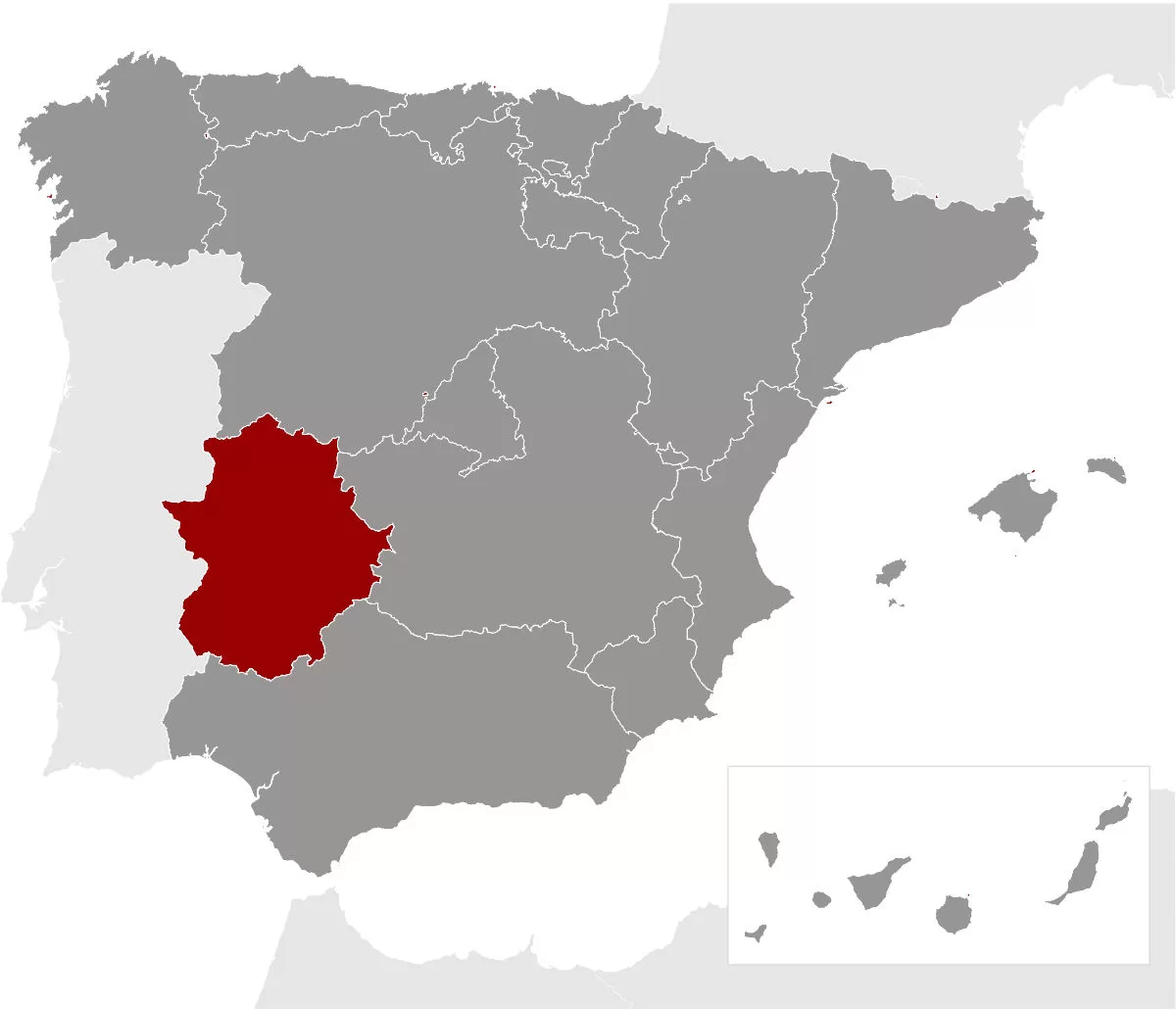
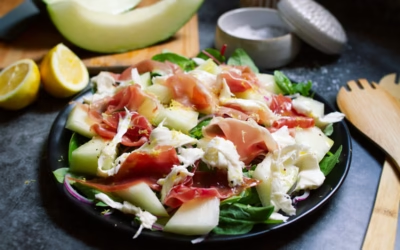
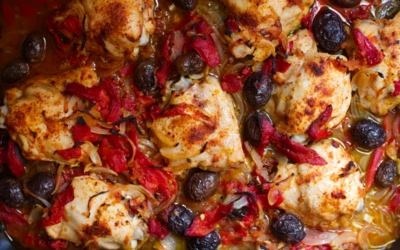
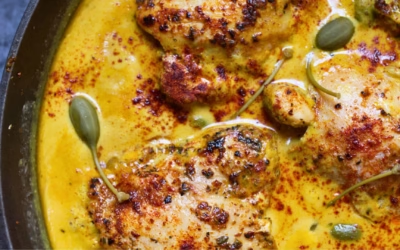
0 Comments